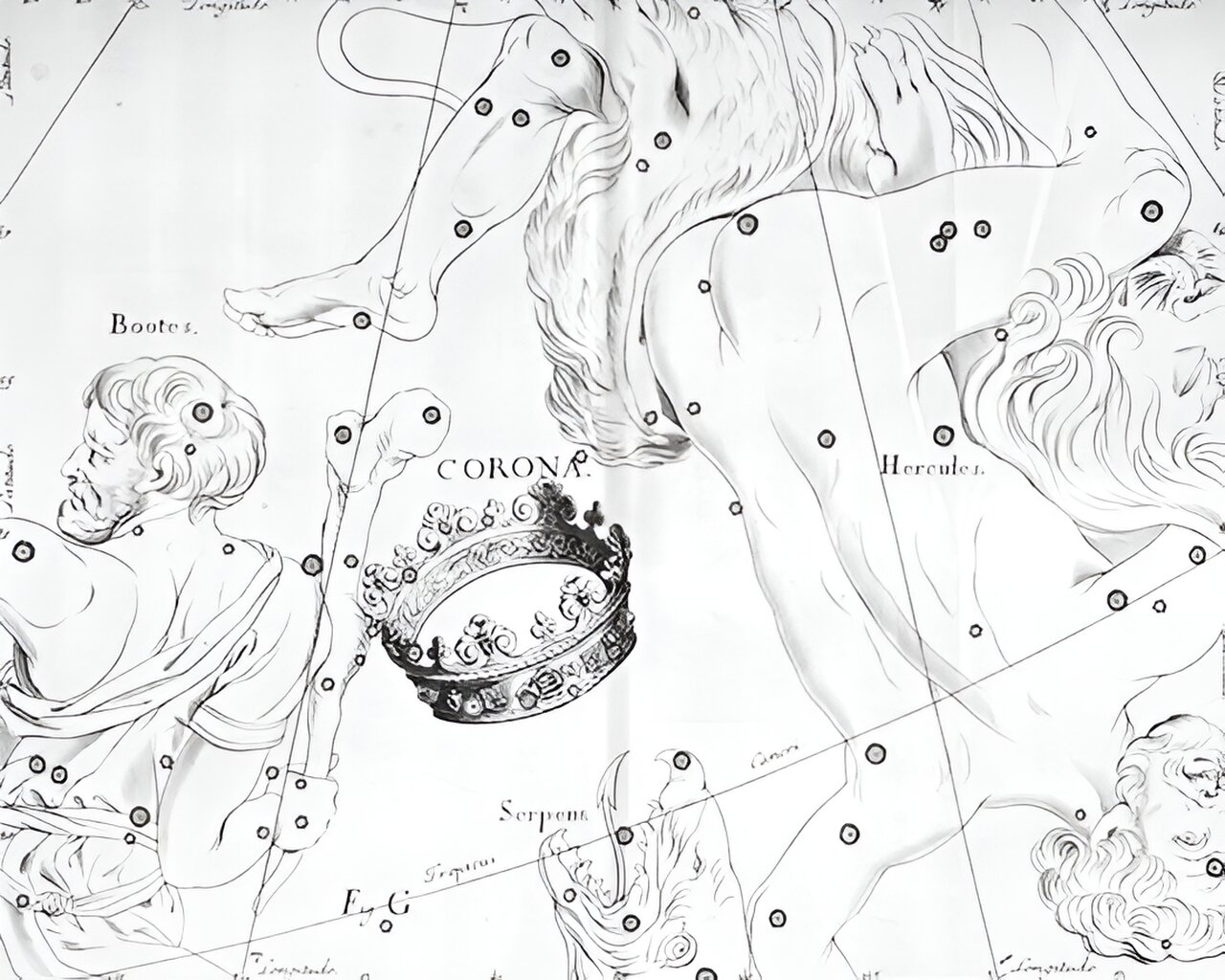Researchers suggest that the medieval chronicle of the XIII century describes the flare of the star, known as T Corona Borealis. It is believed that it is a recurring nova and lights up every 80 years. However, there is not enough data about it yet.

A medieval chronicle describes the flare of a star
Recently, researcher Bradley Schaefer published an article in which he suggested that the medieval chronicle might contain a description of the flare of nova, T CrB. It dates back to 1217 and was created in the Ursberg Abbey in southern Germany near Augsburg. The monks of that time had a habit of recording everything unusual happening in the sky. And the head of this division of the Catholic Church, Burchard, was no exception. Here ‘s what he wrote down:
“In the autumn season of [1217], in the early evening, a wonderful sign was seen in a certain star in the west. This star was located a little west of south, in what astrologers call Ariadne’s Crown [Corona Borealis]. As we ourselves have observed, it was originally a faint star that, for a time, shone with great light, and then returned to its original faintness. There was also a very bright ray reaching up the sky, like a large tall beam. This was seen for many days that autumn.”
Schaefer suggested that we could be talking about the flare of T CrB. This star is known as a recurrent nova. Objects of this type are close pairs of a red giant and a white dwarf. The rarefied atmosphere of the first flows into the second and gradually forms another shell.
When its density exceeds a certain amount, a thermonuclear explosion occurs, which tears off part of the material from the white dwarf, after which everything starts again. In the case of Corona Borealis, this happens approximately every 80 years.
The flares of T CrB are quite bright. Their apparent magnitude can reach 2.0-3.0 m, and this makes it quite noticeable in the night sky. The only problem is that astronomers have observed these events only twice: in 1866 and 1946. Consequently, the observations of medieval monks can be very valuable.
Could it be a supernova?
Burchard and the other monks knew nothing about the modern system of astronomical coordinates. Therefore, what exactly they saw can only be guessed. For example, it could be a supernova. But if this were the case, then the chronicle would describe not just a star, but a luminary that would be visible during the day, for several weeks, or even months.
In addition, if a supernova had flared up at such a short distance that it would have been visible to the naked eye, then a remnant similar to the Crab Nebula left after the event, the light of which reached the Earth in 1054, would have been observed from it.
However, modern astronomers do not see anything like this, and the probability that it has dissipated is extremely low. That is why Schaefer excludes such a possibility.
Perhaps a medieval chronicle describes a comet?
Another possibility is that a planet or comet could have been observed in the XIII century. Of course, medieval monks could have made a mistake, but Corona Borealis is 45° above the ecliptic. Therefore, there simply cannot be any planet there.
The assumption about a comet is more likely. Another chronicle from the monastery of St. Stephen describes its arrival in the same year 1217, but does not give any specific instructions. However, Schaefer makes an argument against this.
In the chronicle, the appearance of a new star is described with respect and generally positively. And it doesn’t say anything about its tail. And in such documents, comets are always described as tailed and usually cause fear of terrible events that will happen soon.
According to phys.org
Follow us on Twitter to get the most interesting space news in time
https://twitter.com/ust_magazine

